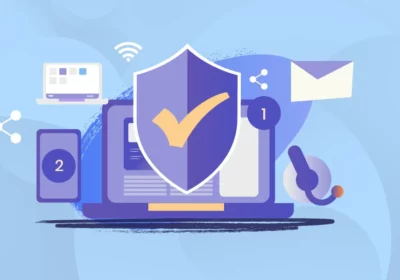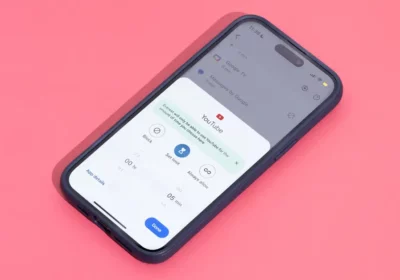In today’s digital world, children and teenagers are more connected than ever before through their smartphones and other devices. While these devices offer numerous advantages, they also present potential risks and challenges for parents. Balancing a child’s privacy with the need to ensure their safety online can be a delicate task. Phone monitoring tools have emerged as valuable resources to help parents keep an eye on their child’s digital activities while respecting their boundaries. In this comprehensive guide, we will delve into the reasons for phone monitoring, the best practices for parents, and the tools available to help you protect your child online.
Why Is Phone Monitoring Important for Parents?
Phone monitoring, or parental control, is a practice that involves tracking and supervising a child’s smartphone or mobile device usage. While it may raise concerns about privacy, there are compelling reasons why phone monitoring is important for parents:
1. Online Safety:
The internet can be a treacherous place for young, impressionable minds. Children may inadvertently come across harmful content or interact with strangers with malicious intentions. Phone monitoring allows parents to protect their children from online threats and intervene when necessary.
2. Cyberbullying Prevention:
Cyberbullying has become a prevalent issue, with many children and teens falling victim to online harassment. Monitoring your child’s digital interactions can help identify signs of bullying and provide timely support.
3. Screen Time Management:
Excessive screen time can have detrimental effects on a child’s physical and mental health. Phone monitoring tools help parents manage screen time, ensuring a healthy balance between digital and real-life activities.
4. Responsible Internet Use:
Phone monitoring promotes responsible internet use and teaches children about the potential consequences of their online actions. It encourages open communication between parents and their kids.
5. Protecting Personal Information:
Children may inadvertently share personal information online, making them vulnerable to identity theft and other dangers. Phone monitoring can help parents educate their children about the importance of protecting personal data.
6. Location Tracking:
Knowing your child’s whereabouts can provide peace of mind and ensure their safety. Some monitoring tools include location tracking features that allow parents to see their child’s real-time location.
Best Practices for Phone Monitoring:
While phone monitoring can be a valuable tool for ensuring your child’s safety online, it’s essential to use it responsibly and respect your child’s privacy. Here are some best practices for phone monitoring:
1. Communication is Key:
Before implementing phone monitoring, have an open and honest conversation with your child. Explain why you’re considering it and assure them that it’s about their safety, not mistrust. Encourage them to ask questions and express their concerns.
2. Choose the Right Time:
Introduce phone monitoring when your child is mature enough to understand its purpose. It’s also a good idea to establish monitoring rules and boundaries, ensuring they are aware of what will be tracked.
3. Be Transparent:
Make sure your child knows that their phone is being monitored. Transparency fosters trust and can help you avoid conflicts later on.
4. Respect Privacy:
While monitoring is essential, respect your child’s privacy to a reasonable extent. Avoid invading their personal conversations or reading their private diaries. Focus on their safety and well-being.
5. Balance Screen Time:
Use monitoring tools to manage and balance your child’s screen time. Encourage them to engage in offline activities, like sports, hobbies, and family time.
6. Stay Informed:
Regularly check and update the monitoring tools you use. Familiarize yourself with the latest apps and websites that your child may access.
7. Set Appropriate Boundaries:
Establish boundaries for internet use, including what kind of content is acceptable and which apps or websites are off-limits. Keep these boundaries age-appropriate.
Phone Monitoring Tools for Parents:
Various phone monitoring tools are available to help parents ensure their child’s safety online. Here are some popular options:
1. Family Link by Google:
Family Link is a free app that allows parents to set digital ground rules for their children. It provides features like screen time limits, app monitoring, and location tracking.
2. Norton Family:
Norton Family is a comprehensive parental control tool that offers web filtering, time management, and location tracking. It’s compatible with both Android and iOS devices.
3. mSpy:
mSpy is a well-known phone monitoring app that offers features like call and message tracking, GPS tracking, and social media monitoring. It is available for both Android and iOS.
4. Qustodio:
Qustodio provides a range of features, including web filtering, app blocking, and screen time management. It works on various platforms and devices.
5. Net Nanny:
Net Nanny offers content filtering, time management, and location tracking. It’s compatible with Windows, macOS, Android, and iOS.
6. FamiSafe:
FamiSafe is a user-friendly parental control app with features like screen time management, app blocking, and web filtering. It supports Android and iOS.
Conclusion
Phone monitoring for parents is a valuable tool to ensure the safety of children in today’s digital world. It helps protect them from online threats, cyberbullying, and excessive screen time. However, it’s essential to use monitoring tools responsibly, respecting your child’s privacy and fostering open communication. With the right balance and approach, phone monitoring can be a powerful ally in safeguarding your child’s digital well-being and promoting responsible internet use.



